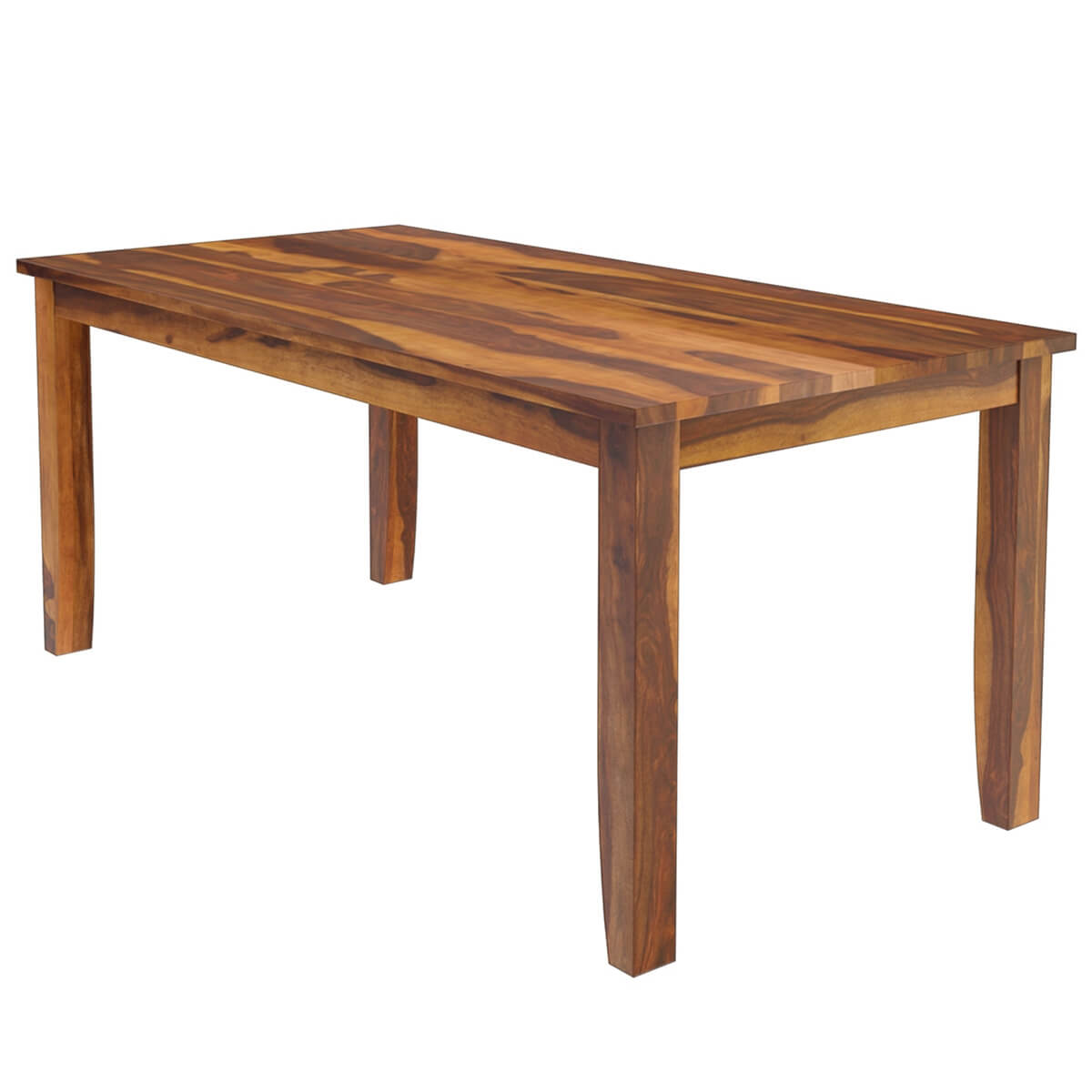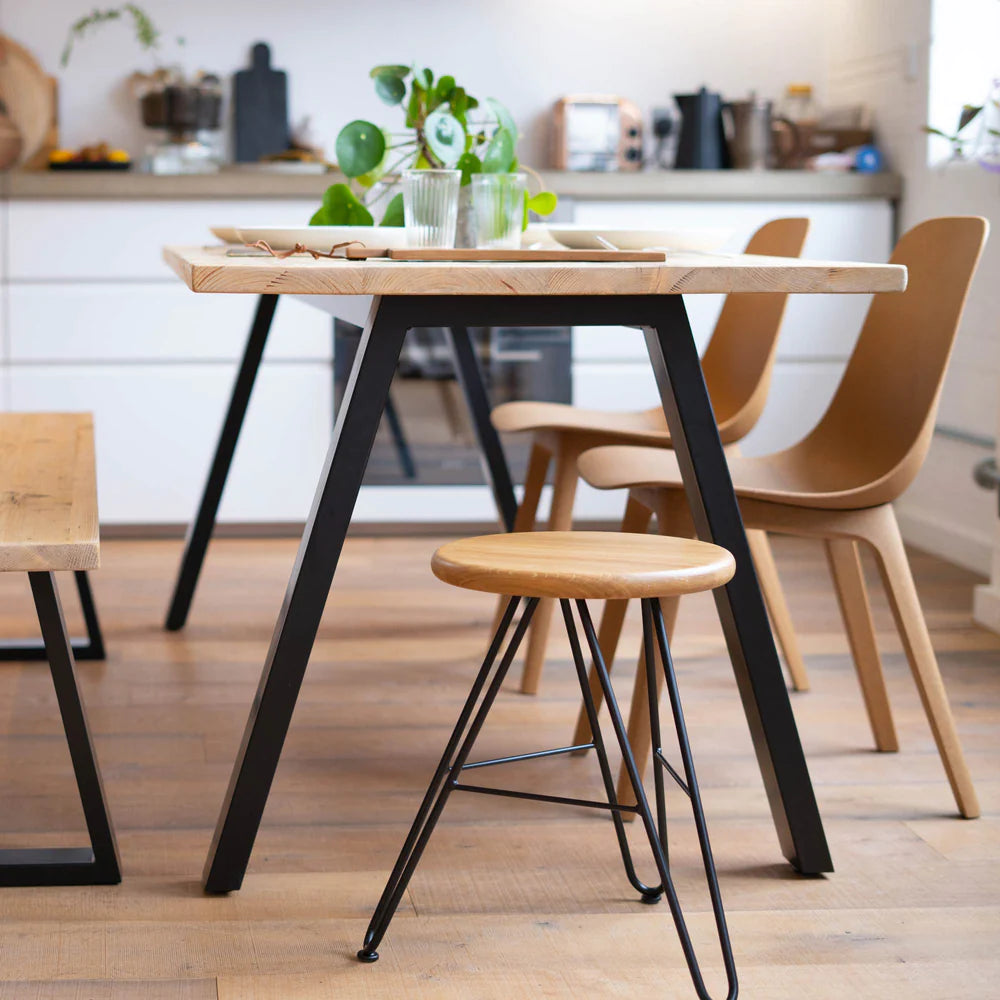Explore Artisan-Made Dining Table Legs Wood for a Customized Finish
Discovering the Various Kinds Of Eating Table Legs Wood for Your Eating Space
The selection of dining table legs timber can greatly impact both the aesthetic and practical qualities of your eating area. Strong wood options, such as oak and walnut, provide a traditional look with unrivaled toughness, while engineered timber choices supply innovative designs that mimic the splendor of natural grains.
Solid Wood Options

Moreover, strong wood is renowned for its stamina and longevity. Unlike crafted products, strong wood is less prone to warping and damage in time when correctly kept. This makes it a perfect choice for family members or those that often host celebrations. Each item of strong wood is special, showcasing specific characteristics that include to the appeal and character of the table.
Additionally, strong wood can be completed in countless methods, varying from all-natural oils to stained finishes, permitting property owners to personalize their furniture to match their decoration. In recap, choosing strong timber for eating table legs not just makes sure structural integrity yet likewise boosts the aesthetic allure of the eating area, making it a beneficial financial investment for any home.
Engineered Timber Alternatives

Plywood, created from numerous layers of wood veneer, is particularly solid and stable, making it a superb option for dining table legs. Its layered structure permits it to stand up to modifications in moisture and temperature better than standard strong timber. MDF, on the various other hand, uses a smooth surface area for painting or veneering, making it possible for designers to attain a sleek look while preserving architectural integrity.
When choosing crafted wood options, it is necessary to think about the intended use and wanted aesthetic. These products not only enhance the performance of eating spaces however additionally enable for higher design flexibility, ensuring that modern and conventional designs can exist together sympathetically.
Reclaimed Wood Includes
Reclaimed timber uses an one-of-a-kind mix of sustainability and personality, making it a progressively preferred choice for dining table legs. Sourced from old barns, factories, and various other structures, redeemed wood symbolizes a history that brand-new materials simply can not duplicate. Each piece brings its very own tale, marked by distinctive imperfections, knots, and differing grain patterns, which contribute to a table's unique aesthetic allure.
Along with its aesthetic appeal, redeemed timber is an environmentally friendly choice. By repurposing formerly used materials, it lowers the demand for new lumber, hence helping to preserve forests and decrease waste. This straightens with an expanding consumer choice for lasting methods in home furnishings.
Moreover, reclaimed wood is often extra long lasting than recently harvested wood due to its age. The natural drying procedure that recovered timber undergoes cause a denser and stronger product, making it much less at risk to bending and splitting. This improves the longevity of dining tables, enabling them to hold up against the roughness of everyday use.
Softwood vs. Wood
When picking eating table legs, recognizing the distinctions between softwood and wood is critical for accomplishing both aesthetic and functional objectives. Softwoods, stemmed from coniferous trees, such as yearn and cedar, are characterized by their lighter weight and ease of manipulation. They usually show a more rustic look, making them suitable for country-style or laid-back eating spaces. Softwoods are typically less long description lasting than hardwoods, which can be a factor to consider for family members or those seeking longevity in their furnishings.
On the various other hand, hardwoods, sourced from deciduous trees like maple, cherry, and oak, are renowned for their thickness, toughness, and durability. The elaborate grain patterns and rich tones of hardwoods offer a advanced and ageless charm, making them suitable for official dining settings. While hardwoods tend to be extra costly and much heavier, their resilience versus damage usually go to this web-site validates the financial investment.
Eventually, the choice between softwood and hardwood for dining table legs need to straighten with your layout vision, use requirements, and budget, ensuring that your dining area shows your individual style while staying practical with time.

Coatings and Treatments
The aesthetic appeal and longevity of dining table legs can be substantially improved with different finishes and treatments. These processes not just safeguard the wood from damages however also elevate its look, permitting it to complement diverse interior designs.
One typical treatment is tarnishing, which passes through the timber and boosts its natural grain while including color. Discolorations provide a rich, classy appearance, allowing home owners to match their furnishings with existing design. Conversely, clear finishes such as polyurethane or varnish produce a safety layer without modifying the timber's initial color, making sure sturdiness against damage.
In addition, natural oils, like tung or linseed oil, nourish the wood and supply a refined sheen, all while being environmentally friendly. These oils enable the surface to breathe, preventing moisture accumulation and potential bending.
For those seeking a rustic charm, weathered or troubled finishes can be put on produce an aged appearance, adding personality to the piece. Inevitably, the option of therapies and finishes relies on personal choice, desired aesthetic appeals, and the specific timber kind, making it crucial to take into consideration these elements when picking dining table legs for your room.
Verdict
In verdict, the selection of eating table leg products significantly affects both the useful and aesthetic facets of an eating space. Strong timbers, crafted alternatives, and reclaimed options each offer distinctive benefits, satisfying various preferences and demands. Comprehending the distinctions between softwoods and woods, along with proper coatings and therapies, permits informed decision-making. Eventually, the choice of timber type ought to line up with desired design, toughness, and ecological factors to consider, enhancing the total eating experience.
The choice of dining table legs wood can profoundly impact both the functional and visual top qualities of your dining room - Dining Table Legs Wood. Strong timber choices, such as oak and find walnut, supply a traditional look with unequaled toughness, while crafted wood alternatives provide ingenious designs that mimic the richness of all-natural grains. Solid timber supplies a timeless quality that can boost the total style of an eating space. Each item of strong wood is distinct, showcasing individual characteristics that include to the charm and personality of the eating table
Furthermore, reclaimed timber is frequently more durable than freshly gathered wood due to its age.